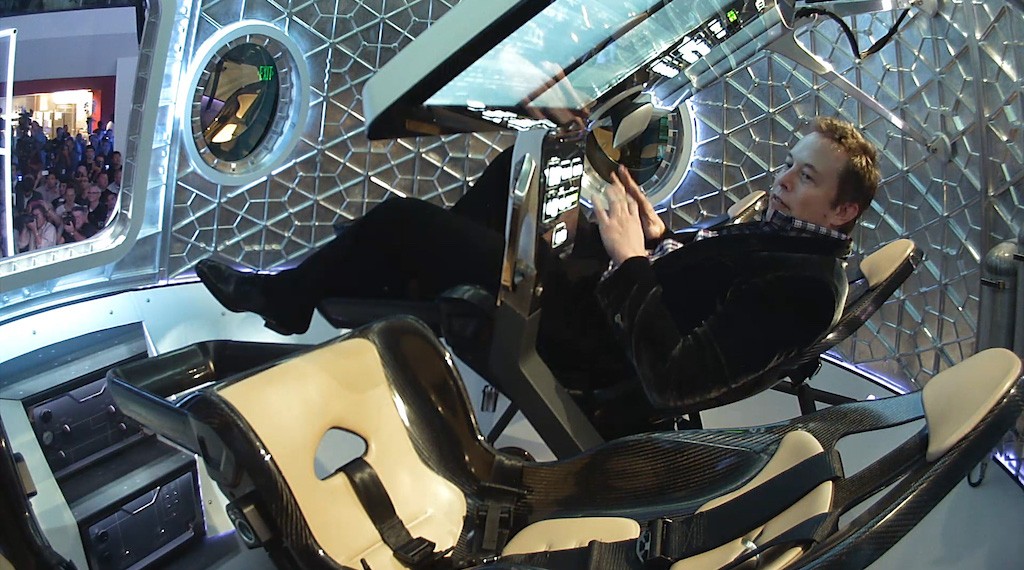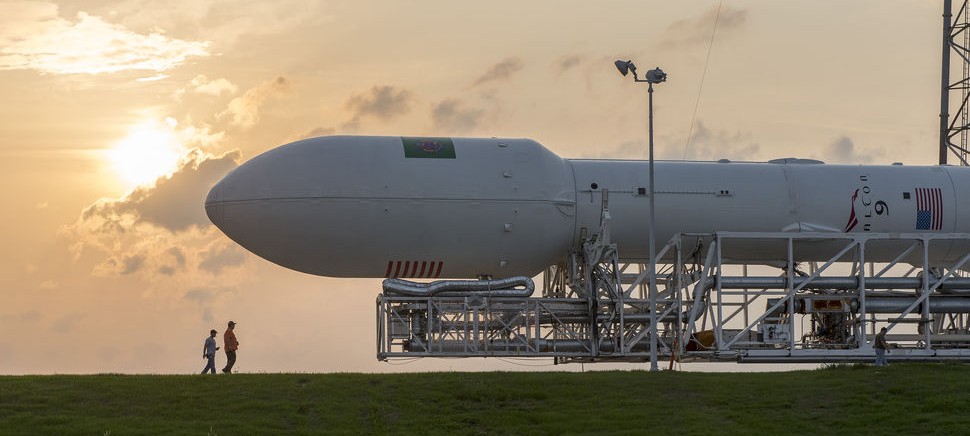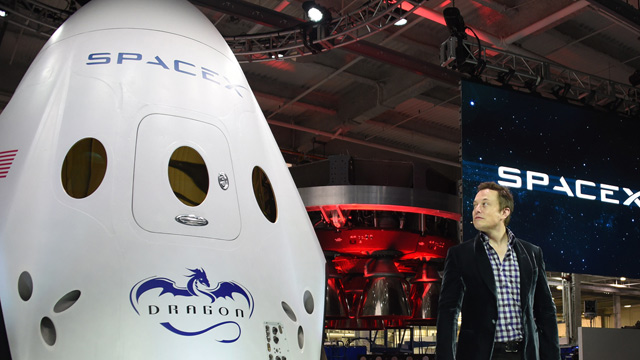

News
Of Mice And Musk: A SpaceX Odyssey
Elon Musk has dreamed of a human colony on Mars since he was a young man. Today, his SpaceX company is taking the first steps toward achieving that dream.
As Ashlee Vance tells it, one wall of Elon Musk’s office at SpaceX headquarters in Hawthorne, California, contains two posters of Mars. On the left is Mars as it exists today – a frozen, lifeless orb. On the right is Musk’s vision of Mars as it could be — a happy place inhabited by humans who frolic on verdant continents surrounded by oceans.
“I would like to die thinking that humanity has a bright future,” he tells Vance while eating cookies and cream with sprinkles on top. “If we can solve sustainable energy and be well on our way to becoming a multi-planetary species with a self-sustaining civilization on another planet—to cope with a worst-case scenario happening and extinguishing human consciousness— then I think that would be really good.” No one has ever accused Elon Musk of thinking too small.
At the turn of the 21st century, Musk had two Martian fantasies. One was to send a colony of mice to the Red Planet and bring them back again, along with their interplanetary babies. The other involved building a greenhouse on Mars and letting Earthlings see the plants inside grow over the internet. Each venture required at least one if not two rocket ships.
He and a coterie of friends traveled twice to Moscow, once in 2001 and again in 2002, trying to purchase surplus Russian rockets that could be refurbished for the Martian missions. The first time did not go well. Recalls Jim Cantrell, one of the team that traveled to Moscow with Musk, “One of their chief designers spit on me and Elon because he thought we were full of shit.” On the second excursion, Musk became convinced the Russians he was meeting with were only interested in fleecing a gullible American with too much money and too few brains.
On the way home from the second failed mission, Musk astonished his team by announcing, “Hey, guys, I think we can build this rocket ourselves.” In June 2002, Space Exploration Technologies, popularly known as SpaceX, was formed to build a cheaper rocket that could carry small payloads into space for paying clients on an average of once a month. The only problem? It had no rocket.
Such trifles were never matters to hold Elon Musk back. He assembled a team of committed rocket engineers and set about accomplishing, with millions, what NASA spent billions doing. Musk’s principle talent, apart from concocting outrageously impossible dreams, is finding people to work for him who are ready, willing and eager to give up all semblance of a normal life in exchange for insane working hours in remote locations. One test launching area was set up in the middle of Texas and another on far away Kwajalein Island, the largest island in an atoll between Guam and Hawaii that is part of the Marshall Islands.
“I would like to die thinking that humanity has a bright future”
SpaceX CEO, Elon Musk
Musk is not a man without a sense of humor. He dubbed his new rocket Falcon 1, paying homage to the Millennium Falcon of Star Wars fame. On its first flight on March 24, 2006, it crashed back to Earth after only 25 seconds. SpaceX employees dutifully donned scuba gear to retrieve some of the pieces from the ocean and set about rebuilding for another attempt.
Musk responded by hiring more engineers and starting work on a brand new rocket, the Falcon 9, that featured one large central rocket surrounded by 8 smaller rockets. Despite the failure of Falcon 1, Musk was already busy positioning the company to bid on NASA contracts to resupply the International Space Station.
On September 1, 2008, Falcon 1 flew its first successful mission. SpaceX was a viable commercial company at last but one that was rapidly going broke. At the end of 2008, Musk knew he would have to choose between SpaceX and Tesla. Alone, one of them might survive. Together? The odds were, both would fail. Musk worried that Tesla would be bought out by one of the Big Three automakers and become just a small part of a giant company.
Later in 2008, Tesla was within hours of defaulting on its payroll obligations. If that happened, Musk’s personal fortune would be gone, along with Tesla and SpaceX. He asked for help from venture capital group VantagePoint but was rebuffed. That’s when Musk put all his chips on red and let them ride.
With all of his dreams and aspirations on the line, Musk executed a colossal bluff. He told investors he would put in $40,000,000 of his own fortune to keep the business going — $40,000,000 he didn’t have. Based on his assurances, other investors agreed to put up $20,000,000 more in financing and the crisis passed. A few weeks later, NASA awarded SpaceX a $1.6 billion contract to do twleve ISS re-supply missions.
Antonio Gracias, a Tesla and SpaceX investor and one of Musk’s closest friends, watched all of this at close hand. He says 2008 told him everything he would ever need to know about Musk’s character. “He has the ability to work harder and endure more stress than anyone I’ve ever met,” Gracias says. “What he went through in 2008 would have broken anyone else. Most people who are under that sort of pressure fray. Their decisions go bad. Elon gets hyperrational. He’s still able to make very clear, long-term decisions. The harder it gets, the better he gets.”
Today, SpaceX launches an average of one rocket a month, carrying payloads for many companies and several nations. Its prices undercut those of Boeing, Lockheed Martin, and Orbital Science by a wide margin. Many of its competitors rely on Russian and other foreign suppliers but SpaceX makes its machines from scratch in the U.S.
Its clientele includes Canadian, European, and Asian customers and it has more than 50 flights planned over the coming years worth more than $5 billion. The company remains privately owned, with Musk as the largest shareholder. SpaceX is profitable and is estimated to be worth $12 billion.
The Falcon 9 has gone from a fantasy to SpaceX’s workhorse. Painted pure white with only an American flag and the SpaceX logo adorning its sides, there’s nothing particularly flashy looking about the Falcon 9. It’s just an elegant, purposeful machine. And to think that for a period of weeks just a few years ago, it’s ability to lead mankind into the dawn of commercial space travel almost died before it was ever born, thanks to a bluff so bold and so daring, it would leave most of us breathless.
Jimmy Buffett once sang, “Read dozens of books about heroes and crooks, and I learned much from both of their styles.” Which one is Elon Musk? Read Ashlee Vance’s book and make up your own mind.
Source: Bloomberg

News
Tesla Model Y L is gaining momentum in China’s premium segment
This suggests that the addition of the Model Y L to Tesla China’s lineup will not result in a case of cannibalization, but a possible case of “premiumization” instead.
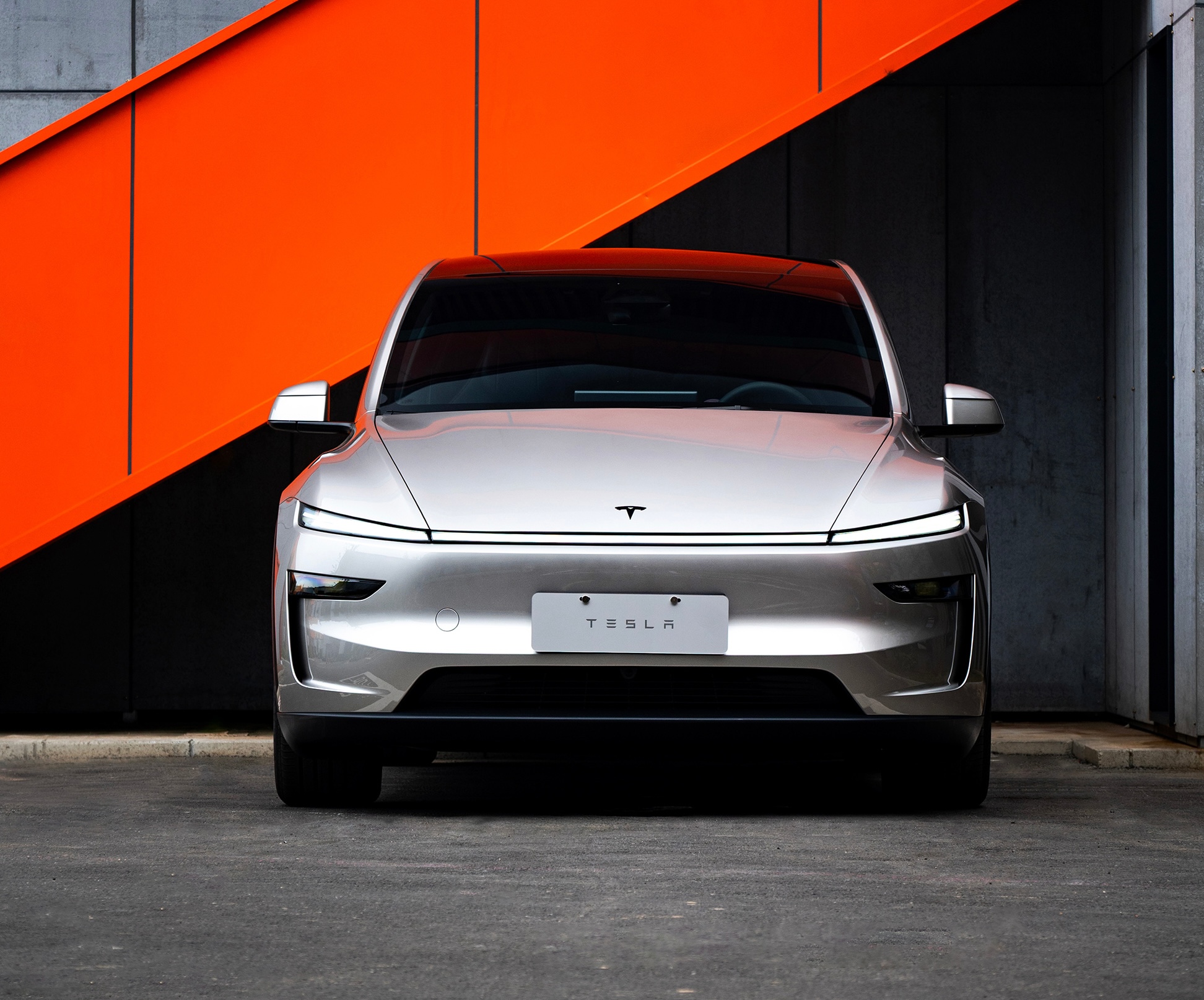
Tesla’s domestic sales in China held steady in November with around 73,000 units delivered, but a closer look at the Model Y L’s numbers hints at an emerging shift towards pricier variants that could very well be boosting average selling prices and margins.
This suggests that the addition of the Model Y L to Tesla China’s lineup will not result in a case of cannibalization, but a possible case of “premiumization” instead.
Tesla China’s November domestic numbers
Data from the a Passenger Car Association (CPCA) indicated that Tesla China saw domestic deliveries of about 73,000 vehicles in November 2025. This number included 34,000 standard Model Y units, 26,000 Model 3 units, and 13,000 Model Y L units, as per industry watchers.
This means that the Model Y L accounted for roughly 27% of Tesla China’s total Model Y sales, despite the variant carrying a ~28% premium over the base RWD Model Y that is estimated to have dominated last year’s mix.
As per industry watcher @TSLAFanMtl, this suggests that Tesla China’s sales have moved towards more premium variants this year. Thus, direct year-over-year sales comparisons might miss the bigger picture. This is true even for the regular Model Y, as another premium trim, the Long Range RWD variant, was also added to the lineup this 2025.
November 2025 momentum
While Tesla China’s overall sales this year have seen challenges, the Model Y and Model 3 have remained strong sellers in the country. This is especially impressive as the Model Y and Model 3 are premium-priced vehicles, and they compete in the world’s most competitive electric vehicle market. Tesla China is also yet to roll out the latest capabilities of FSD in China, which means that its vehicles in the country could not tap into their latest capabilities yet.
Aggregated results from November suggest that the Tesla Model Y took the crown as China’s #1 best-selling SUV during the month, with roughly 34,000 deliveries. With the Model Y L, this number is even higher. The Tesla Model 3 also had a stellar month, seeing 25,700 deliveries during November 2025.
Cybertruck
Tesla Cybertruck earns IIHS Top Safety Pick+ award
To commemorate the accolade, the official Cybertruck account celebrated the milestone on X.

The Tesla Cybertruck has achieved the Insurance Institute for Highway Safety’s (IIHS) highest honor, earning a Top Safety Pick+ rating for 2025 models built after April 2025.
The full-size electric pickup truck’s safety rating is partly due to the vehicle’s strong performance in updated crash tests, superior front crash prevention, and effective headlights, among other factors. To commemorate the accolade, the official Cybertruck account celebrated the milestone on X.
Cybertruck’s IIHS rating
As per the IIHS, beginning with 2025 Cybertruck models built after April 2025, changes were made to the front underbody structure and footwell to improve occupant safety in driver-side and passenger-side small overlap front crashes. The moderate overlap front test earned a good rating, and the updated side impact test also received stellar marks.
The Cybertruck’s front crash prevention earned a good rating in pedestrian scenarios, with the standard Collision Avoidance Assist avoiding collisions in day and night tests across child, adult crossing, and parallel paths. Headlights with high-beam assist compensated for limitations, contributing to the top award.
Safest and most autonomous pickup
The Cybertruck is one of only two full-size pickups to receive the IIHS’ Top Safety Pick + rating. It is also the only one equipped with advanced self-driving features via Tesla’s Full Self-Driving (Supervised) system. Thanks to FSD, the Cybertruck can navigate inner city streets and highways on its own with minimal supervision, adding a layer of safety beyond passive crash protection.
Community reactions poured in, with users praising the vehicle’s safety rating amidst skepticism from critics. Tesla itself highlighted this by starting its X post with a short clip of a Cybertruck critic who predicted that the vehicle will likely not pass safety tests. The only question now is, of course, if the vehicle’s Top Safety Pick+ rating from the IIHS will help the Cybertruck improve its sales.
News
Tesla stands to gain from Ford’s decision to ditch large EVs
Tesla is perhaps the biggest beneficiary of Ford’s decision, especially as it will no longer have to deal with the sole pure EV pickup that outsold it from time to time: the F-150 Lightning.
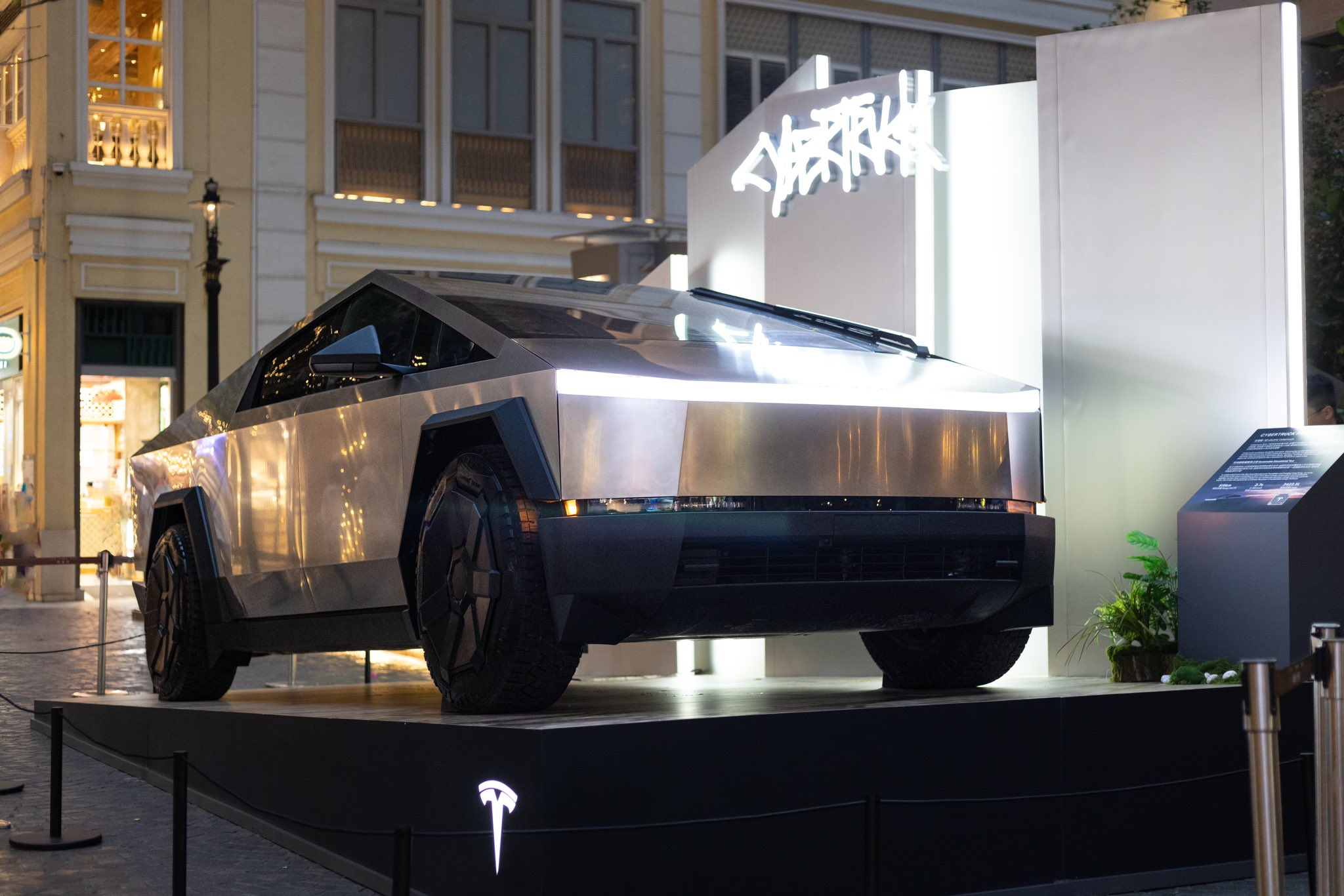
Ford’s recent decision to abandon production of the all-electric Ford F-150 Lightning after the 2025 model year should yield some advantages for Tesla.
The Detroit-based automaker’s pivot away from large EVs and toward hybrids and extended-range EVs that come with a gas generator is proof that sustainable powertrains are easy on paper, but hard in reality.
Tesla is perhaps the biggest beneficiary of Ford’s decision, especially as it will no longer have to deal with the sole pure EV pickup that outsold it from time to time: the F-150 Lightning.
Here’s why:
Reduced Competition in the Electric Pickup Segment
The F-150 Lightning was the Tesla Cybertruck’s primary and direct rival in the full-size electric pickup market in the United States. With Ford’s decision to end pure EV production of its best-selling truck’s electric version and shifting to hybrids/EREVs, the Cybertruck faces significantly less competition.
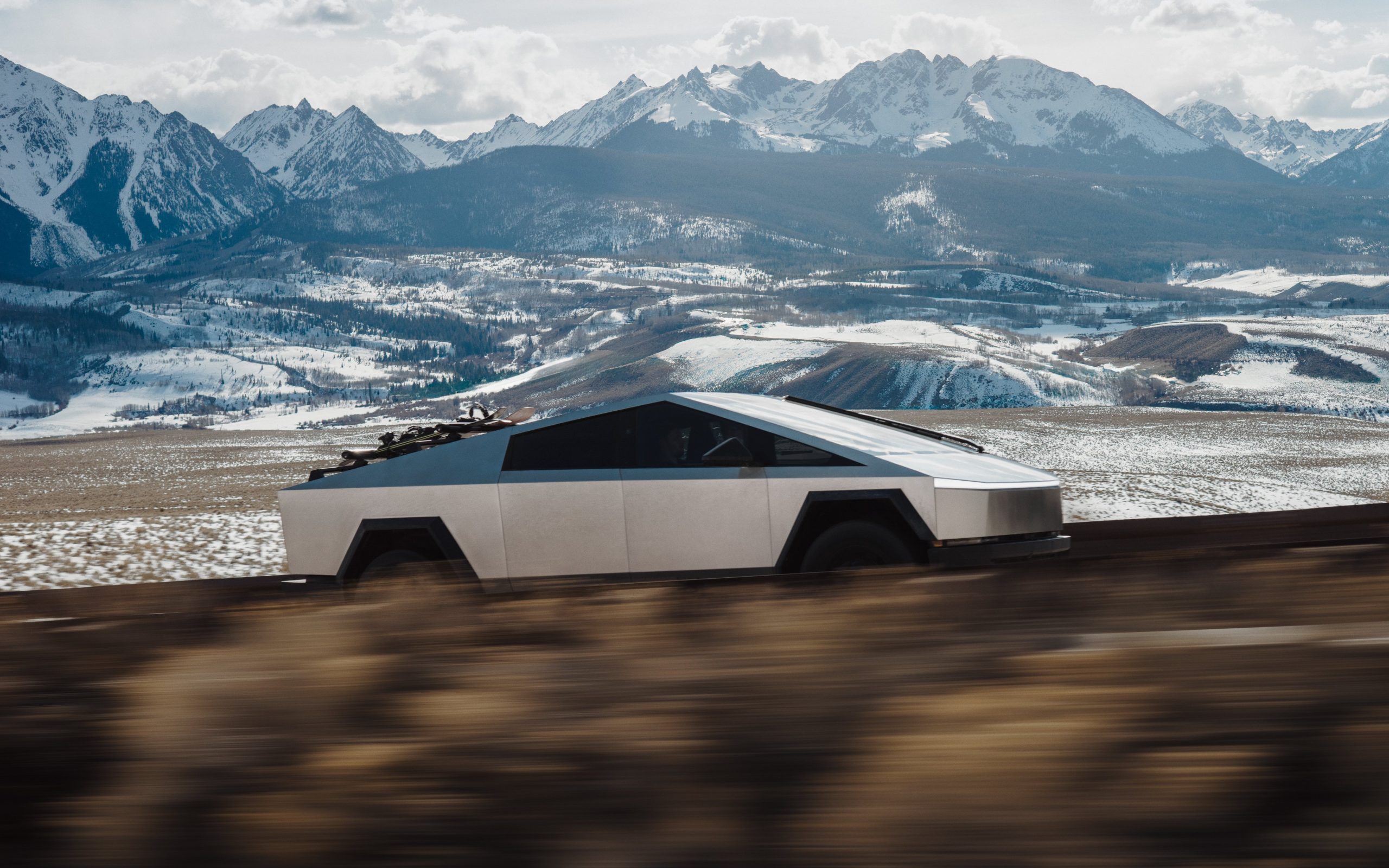
Credit: Tesla
This could drive more fleet and retail buyers toward the Cybertruck, especially those committed to fully electric vehicles without a gas generator backup.
Strengthened Market Leadership and Brand Perception in Pure EVs
Ford’s pullback from large EVs–citing unprofitability and lack of demand for EVs of that size–highlights the challenges legacy automakers face in scaling profitable battery-electric vehicles.
Tesla, as the established leader with efficient production and vertical integration, benefits from reinforced perception as the most viable and committed pure EV manufacturer.
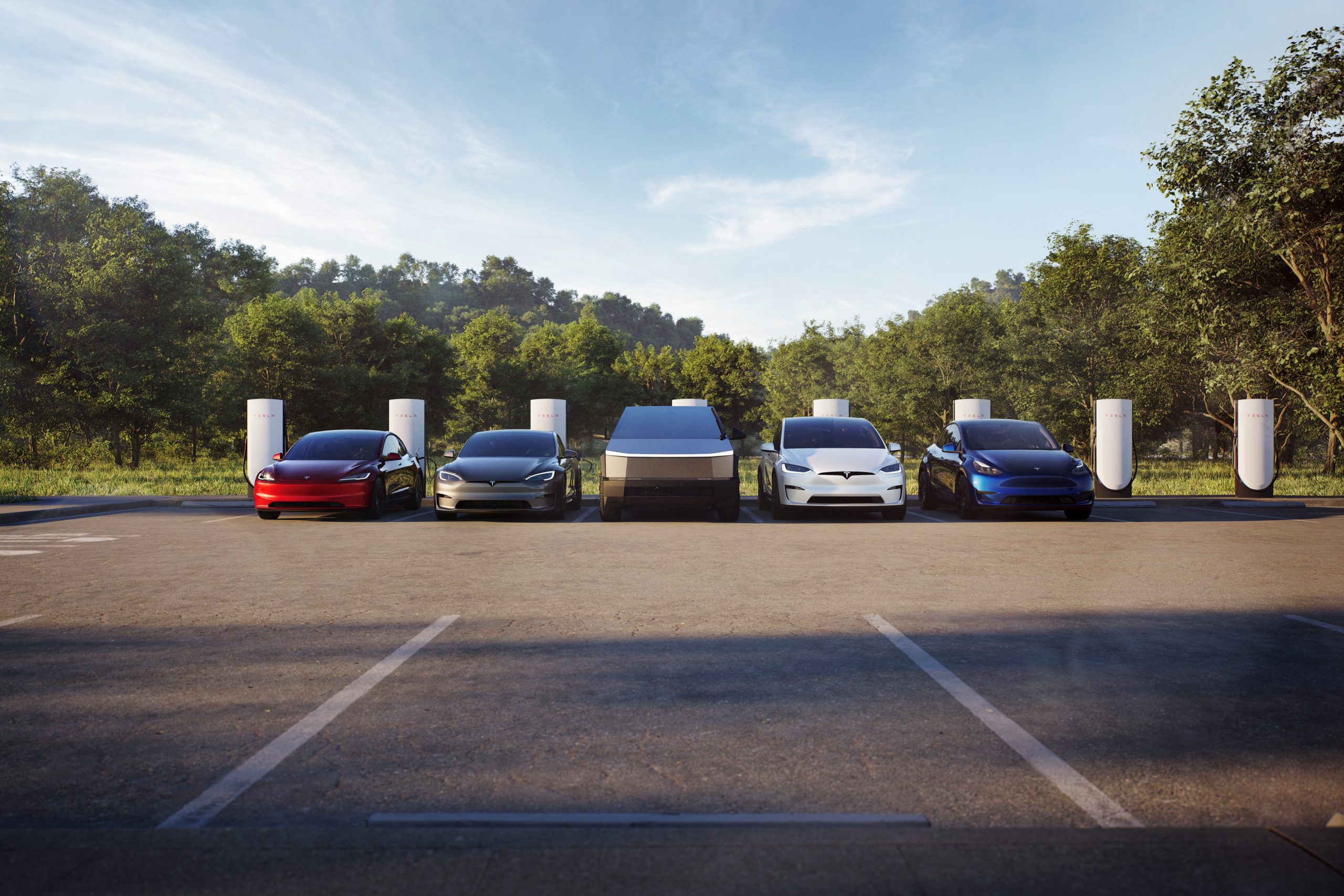
Credit: Tesla
This can boost consumer confidence in Tesla’s long-term ecosystem over competitors retreating to hybrids. With Ford making this move, it is totally reasonable that some car buyers could be reluctant to buy from other legacy automakers.
Profitability is a key reason companies build cars; they’re businesses, and they’re there to make money.
However, Ford’s new strategy could plant a seed in the head of some who plan to buy from companies like General Motors, Stellantis, or others, who could have second thoughts. With this backtrack in EVs, other things, like less education on these specific vehicles to technicians, could make repairs more costly and tougher to schedule.
Potential Increases in Market Share for Large EVs
Interestingly, this could play right into the hands of Tesla fans who have been asking for the company to make a larger EV, specifically a full-size SUV.
Customers seeking large, high-capability electric trucks or SUVs could now look to Tesla for its Cybertruck or potentially a future vehicle release, which the company has hinted at on several occasions this year.
With Ford reallocating resources away from large pure EVs and taking a $19.5 billion charge, Tesla stands to capture a larger slice of the remaining demand in this segment without a major U.S. competitor aggressively pursuing it.
